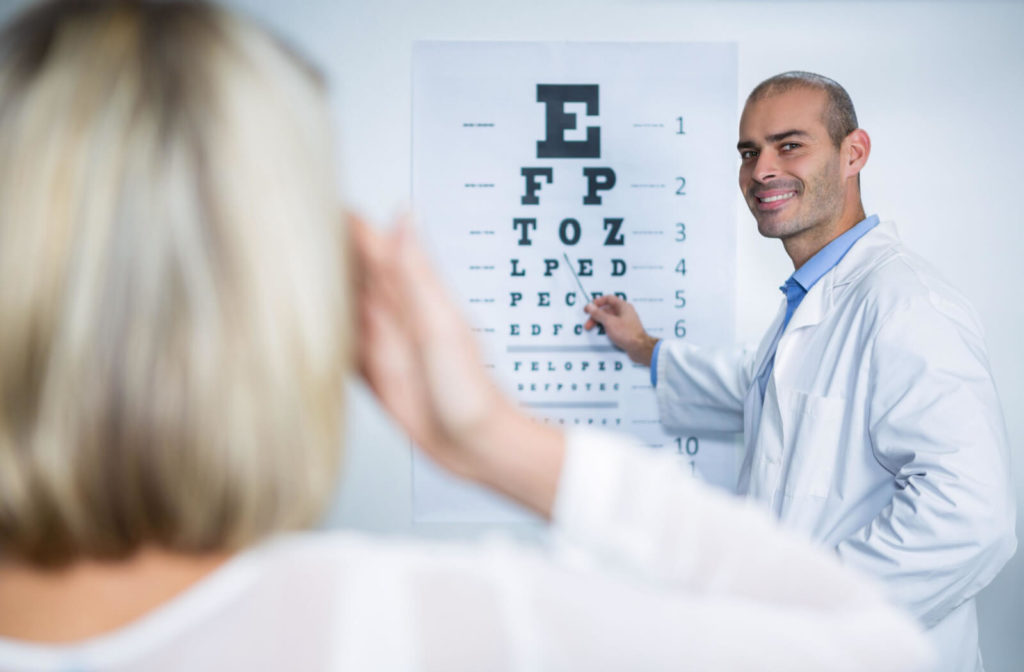Exactly How an Eye Doctor Can Transform Your Vision Health in Chino
Exactly How an Eye Doctor Can Transform Your Vision Health in Chino
Blog Article
Discovering the most up to date Technological Developments in Optometry and What They Mean for Optometrists
In the ever-evolving area of optometry, recent technical innovations are improving just how experts come close to eye care. From the accuracy of Optical Coherence Tomography to the nuanced understandings offered by AI-driven diagnostic devices, these innovations are setting new criteria in client assessment and treatment. Teleoptometry is positioned to redefine availability, guaranteeing that expertise goes beyond geographical restrictions. As these innovations penetrate the technique, optometrists are confronted with the difficulty of welcoming these tools to boost person end results. The question remains: how will these technical changes redefine the functions and obligations within the profession?
Advancements in Diagnostic Equipment
Advancing the field of optometry, developments in analysis devices have reinvented the means eye care professionals assess and identify visual impairments and ocular conditions. The previous decade has witnessed considerable technological advancements, making it possible for more extensive and accurate evaluations. Optical Comprehensibility Tomography (OCT), for instance, supplies high-resolution cross-sectional pictures of the retina, allowing for the early detection of illness such as glaucoma and age-related macular degeneration. This non-invasive imaging method has come to be important in modern optometric technique.
An additional key technology is the introduction of sophisticated corneal topography systems, which map the surface area curvature of the cornea with precision. These tools are particularly beneficial for fitting contact lenses and detecting corneal conditions. Additionally, electronic retinal imaging has transformed traditional ophthalmoscopy, offering detailed, breathtaking views of the retina that assist in complete visual assessments.
The advancement of wavefront aberrometry has actually likewise been vital, enabling the analysis of refractive mistakes with unmatched accuracy (Optometrist Chino). This innovation aids in personalizing corrective lenses and improving surgical results for refractive surgical treatments. Collectively, these diagnostic advancements equip optometrists to supply remarkable client treatment, making certain early intervention and tailored therapy strategies, eventually improving aesthetic wellness results
AI in Individual Administration
Structure on the structure of innovative diagnostic tools, the unification of artificial intelligence (AI) in patient monitoring represents a transformative jump for optometry. AI systems are significantly utilized to enhance performance, precision, and personalization in person care.
Moreover, AI-driven systems assist in structured individual interactions and management processes. Automated scheduling, digital assessments, and customized follow-up strategies not just improve patient fulfillment however likewise optimize time administration for experts. These systems can triage people based upon the seriousness of their conditions, making sure that those in important requirement obtain timely interest.
Moreover, AI enhances decision-making by providing eye doctors with evidence-based referrals and therapy paths. By incorporating information from digital health and wellness documents, AI devices offer understandings that educate medical choices, reducing the risk of mistakes and boosting patient outcomes. As AI continues to progress, its role in person management will likely increase, improving the landscape of optometric care.
Advances in Retinal Imaging
In the realm of optometry, retinal imaging has experienced amazing technical developments that are improving diagnostic abilities and person treatment. Innovations such as Optical Coherence Tomography (OCT) and fundus digital photography have revolutionized how optometrists examine the retina and envision.
Improved imaging methods like OCT angiography are additional refining diagnostic accuracy. Opticore Optometry. Such advancements facilitate the recognition of min retinal adjustments that might represent disease progression.
Moreover, advancements in expert system are enhancing retinal imaging by making it possible for automatic evaluation of large datasets. These systems aid eye doctors in recognizing patterns a measure of pathology, thereby improving analysis precision and efficiency. Collectively, these innovations are transforming retinal imaging right into a cornerstone of contemporary eye treatment, improving end results and increasing therapeutic opportunities.
Teleoptometry's Growing Duty
Teleoptometry is progressively ending up being a crucial component of eye treatment, driven by developments in data and diagnostic tools. As optometry welcomes electronic makeover, teleoptometry helps with remote assessments, enabling eye doctors to expand their services beyond traditional you could try here borders. This is especially beneficial in country and underserved areas where accessibility to specialized eye treatment is typically limited. By leveraging high-resolution video clip conferencing and advanced retinal imaging, eye doctors can carry out comprehensive eye tests from afar, making certain prompt diagnosis and therapy.
The combination of expert system (AI) further boosts teleoptometry, making it possible for the evaluation of visual information and assisting in the discovery of ocular conditions such as glaucoma and diabetic person retinopathy. AI-powered algorithms can quickly analyze intricate imaging data, offering eye doctors with useful understandings that strengthen scientific decision-making.
Moreover, teleoptometry sustains connection of care through seamless assimilation with digital health records (EHRs), enabling eye doctors to keep extensive person histories. This ensures that patients get customized and consistent care also when seeking advice from with various experts.
Despite these advantages, obstacles continue to be, consisting of guaranteeing information security and managing client assumptions. Teleoptometry stands for a considerable stride in the direction of more accessible, effective, and patient-centered eye care. As modern technology advances, its duty is poised to broaden even more.

Future Patterns in Eye Care
A myriad of ingenious trends is readied to reshape the future of eye treatment, driven by technological improvements and the advancing demands of clients. One significant fad is the assimilation of fabricated knowledge (AI) in diagnostics, which guarantees to improve the accuracy and performance of eye exams. AI formulas can assess vast quantities of information from retinal pictures, possibly finding conditions like diabetic person retinopathy and glaucoma earlier than conventional approaches.
In addition, customized medicine is gaining grip in optometry, with hereditary screening notifying customized treatment strategies. This strategy intends to enhance client end results by customizing treatments to individual hereditary accounts. Wearable modern technology, such as clever contact lenses, is additionally coming up, offering real-time monitoring of intraocular stress or sugar degrees, hence supplying constant understandings right into systemic and ocular wellness.
The fostering of augmented fact (AR) and virtual reality (VIRTUAL REALITY) in training and individual education is one more emerging pattern. These innovations offer immersive experiences that can improve understanding and skills both for individuals and eye doctors. As these patterns progress, optometrists must stay abreast of technical advancements to give cutting-edge care, making sure enhanced person results and fulfillment in the dynamic landscape of eye care.
Conclusion

Jointly, these diagnostic improvements equip eye doctors to provide remarkable person care, making certain early treatment and tailored therapy strategies, inevitably boosting aesthetic wellness end results.

As these modern technologies continue to develop, eye doctors have to adapt and integrate them right into practice, ultimately enhancing operations efficiency and raising the criterion of eye care provided to clients.
Report this page